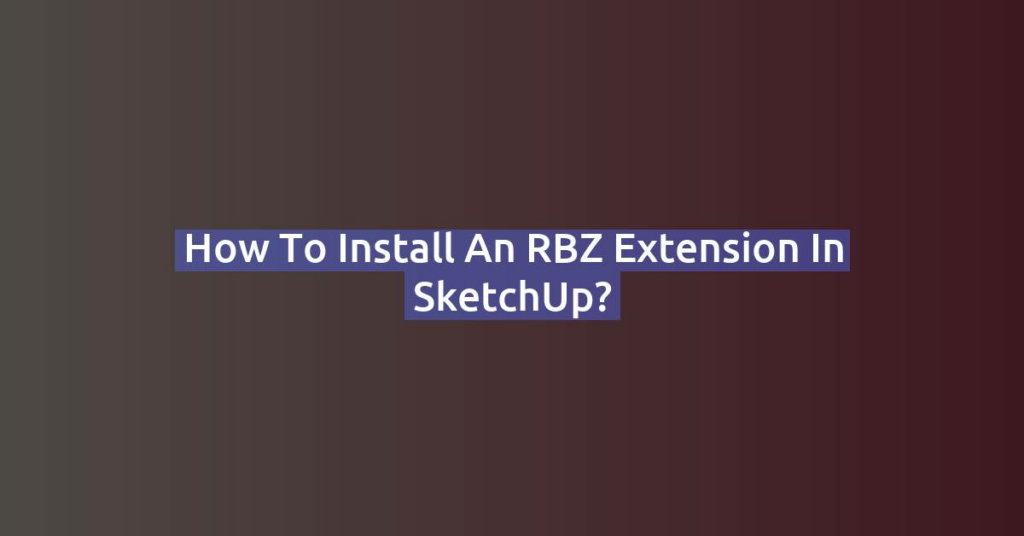1. Define Your Portfolio’s Purpose
First, clarify your portfolio’s purpose and target audience. Ask yourself:
- Who will view this portfolio? (e.g., hiring managers, clients, collaborators)
- What type of work do I want to showcase? (architecture, interior design, product design, etc.)
- What is my goal? (landing a job, attracting freelance clients, or building a creative brand)
Defining your purpose will help guide the structure, content, and style of your portfolio.
2. Choose a Format for Your Portfolio
There are several options for presenting a SketchUp portfolio. Each has its pros and cons depending on your goals and preferences.
- PDF Portfolio: Ideal for offline sharing and creating a curated, static portfolio. This format is easy to email and download.
- Website Portfolio: Allows for a dynamic presentation with video, animation, and interactive elements.
- Wix and Squarespace are great for beginners looking to create a visually engaging website.
- Explore Wix for Portfolio Websites
- Explore Squarespace for Portfolio Websites
- Online Portfolio Platforms: Sites like Behance or ArtStation are excellent for sharing 3D work with a creative community and getting feedback.
Choose the format that best suits your goals and is accessible for your intended audience.
3. Select Your Best SketchUp Projects
A strong portfolio emphasizes quality over quantity. Choose 5-10 of your best SketchUp projects that showcase a variety of skills. Select pieces that demonstrate:
- Technical Skill: Clean modeling, attention to detail, and complexity.
- Creativity and Design Sense: Unique or innovative ideas, especially important for product and architectural designs.
- Diversity: Include different types of projects if possible (e.g., residential architecture, commercial interiors, product designs).
If you only have a few projects, consider working on new models specifically for your portfolio.
4. Organize Your Projects
Arrange your projects in a logical order. Here are some common organization techniques:
- Chronological Order: Showcase your growth over time.
- Project Type: Group similar types of projects together.
- Skill Progression: Begin with simpler models and gradually present more complex ones.
Each project should include:
- Title and Short Description: Explain the project’s purpose, tools used, and any specific challenges you solved.
- Software Used: Mention SketchUp and any other tools (e.g., V-Ray for rendering or Photoshop for post-processing).
5. Add Visual Details: Renders, Screenshots, and Wireframes
Include a variety of images to showcase each model. Consider:
- Rendered Images: High-quality renders give a realistic view of your work and highlight your skills in lighting, texturing, and material choice. V-Ray or Enscape are popular rendering plugins for SketchUp.
- Wireframes and Orthographic Views: These are great for highlighting technical skills and model accuracy.
- Screenshots of SketchUp Interface: Showing your workspace with layers, components, and scenes can provide insight into your workflow.
6. Include Process Work and Sketches
Process work helps viewers understand your design approach. If applicable, add:
- Initial Sketches and Concepts: Showcase your ideation process, including hand sketches or early 3D mockups.
- Workflow Screenshots: Show stages from basic shapes to refined models to final renders. This can also highlight your SketchUp tool expertise.
- Inspiration Boards: Include mood boards, Pinterest boards, or photos that inspired your design.
7. Add Explanations and Captions
For each project, add short captions to guide the viewer and provide context. Captions should be concise but informative:
- Describe the project’s goal and purpose.
- Mention design decisions and explain why you chose certain shapes, materials, or perspectives.
- Note any challenges or unique methods you used (e.g., custom textures, complex geometry, unique lighting).
This adds depth to your portfolio and helps clients or hiring managers see your problem-solving and creative thinking skills.
8. Brand Your Portfolio
Create a consistent brand across your portfolio by choosing a unique style, color palette, and layout. Branding helps make your portfolio memorable and professional. Here’s how to create a cohesive look:
- Use a custom logo or monogram.
- Choose a specific color scheme for your backgrounds, text, and project dividers.
- Add consistent typography for titles, descriptions, and headers.
If you’re using a website, consider choosing a minimalistic and clean layout to keep the focus on your designs.
9. Make It Interactive (Optional)
For online portfolios, you can make your portfolio interactive to engage viewers:
- 360-Degree Model Viewer: Embed 3D model viewers that allow users to interact with your models.
- Animated Walkthroughs: Record screen capture walkthroughs or render animations of your models. This adds an extra layer of immersion, especially for architectural projects.
Check out Sketchfab for embedding 3D model viewers:
10. Share and Promote Your Portfolio
Once you’re happy with your portfolio, share it with the world! Post it on social media, share it on LinkedIn, or email it to potential clients and employers. Consider adding it to creative platforms like Behance, ArtStation, or even creating a YouTube channel for showcasing your design process and finished models.
- LinkedIn: Great for connecting with professionals and showcasing projects to potential employers.
Conclusion
Creating a SketchUp portfolio takes time, but a strong, well-curated portfolio can be your best tool for showcasing your skills and landing opportunities. By following these steps—choosing your best projects, organizing them effectively, adding process details, and branding—you’ll create a portfolio that highlights your skills and makes a lasting impression.
Happy building, and good luck with your SketchUp portfolio!



